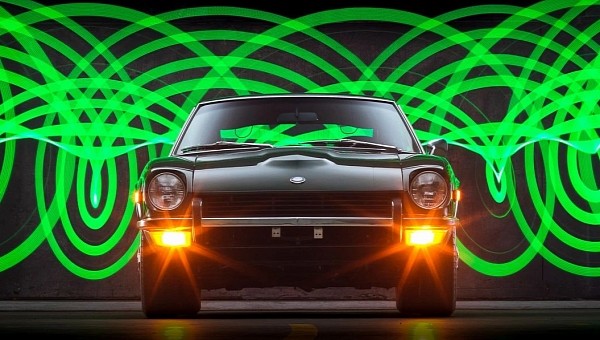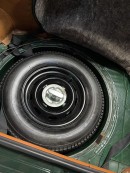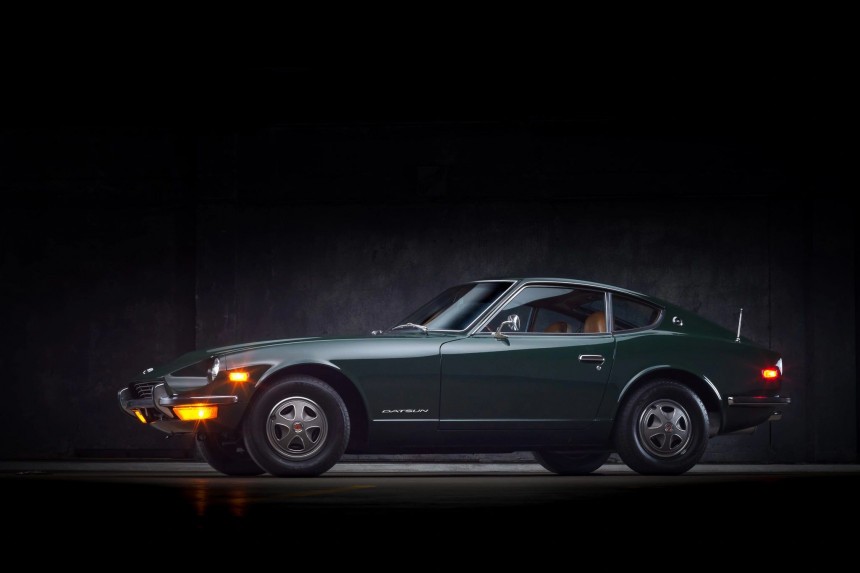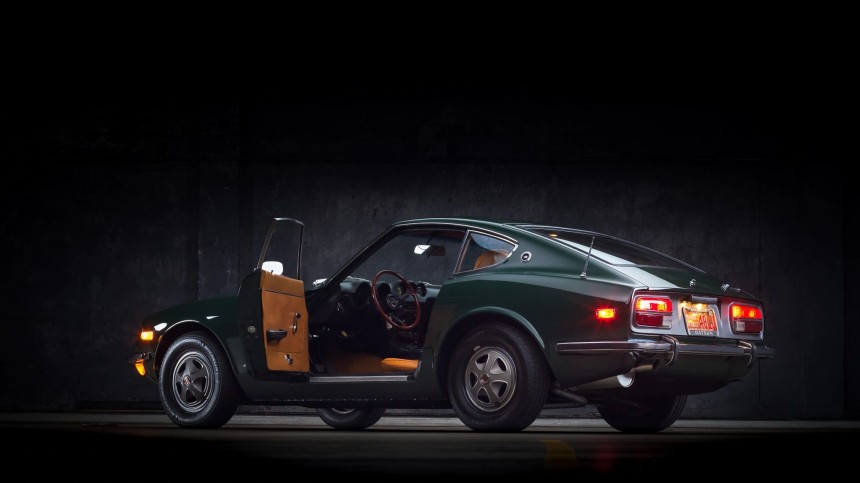Yutaka Katayama, lovingly referred to as Mr. K, left this world for greener pastures in 2015 at the ripe old age of 105. Right after he graduated from Keio University in Tokyo, this kind gentleman was hired by Nissan, where he played a vital role in developing the Z car. His legacy soldiers on with the 2023 model year Z, which couldn’t have been possible without decades over decades of technical and technological developments.
It all started with the Fairlady Z, better known as the Datsun 240Z in the U.S. market. Speaking of which, Mr. K came up with the idea that evolved into the original Z car during his tenure at Nissan’s North American division. Yutaka, which means plenty of things in Japanese depending on the kanji used to write said word, saw the advent of the pony and muscle car in the 1960s. The Fairlady series of roadsters didn’t quite cut it in the U.S. of A., which is why he realized that Nissan duly needed a different sports car.
Fairlady roadster owners complained to Nissan North America over inadequate protection from the elements, abysmal performance in the snow, and pretty much everything in between. The Fairlady was too small for the U.S. market as well, and its pint-sized powerplants didn’t make the Fairlady a true alternative for the likes of the Ford Mustang, Chevrolet Camaro, and so forth. As a result, Katayama decided on a closed-body car that would be stiffer and more practical than the Datsun Fairlady series of roadsters.
Mr. K is also credited with fighting the bigwigs in Japan over the proposed name for the 240Z in the U.S. market: Datsun Fairlady 240Z. He rightfully convinced Nissan to drop the Fairlady part, which effeminates the car in the eyes of a western audience. Penned by the Japanese automaker’s Sports Car Styling Studio as a two-seat coupe with three doors, the 240Z launched in October 1969 at the Tokyo Motor Show with three engine choices.
The Japan-spec Nissan Fairlady Z was named this way because it was powered as standard by a 2.0-liter engine. Codenamed L20, the four-cylinder lump was preferred over the six-cylinder L24 due to punitive taxes levied on vehicles with mills larger than 2.0 liters. No fewer than three trim levels were originally available in Japan. The base specification was 930,000 yen, which means approximately 3,310,000 yen after adjusting for inflation. Converted at current exchange rates, that would be 25,060 greenbacks.
The Z-L grade came with a more standard kit. As for the Z432, the performance-oriented version featured the S20 double-overhead-camshaft engine originally designed by Prince. Not the guy who sang about purple rain and sext MFs, but the Prince Motor Company. Merged with Nissan in 1965, this automaker introduced the Skyline in 1957. As you’re well aware, the nameplate was later adopted by Nissan. The Skyline and GT-R monikers were separated in December 2007 with the introduction of the R35.
The Z432 is called this way after Z car, 4 valves per cylinder, 3 Mikuni carbs, and 2 camshafts. It was factory rated at 160 ps (158 horsepower) at 7,000 revolutions per minute and 177 Nm (131 pound-feet) of torque at 5,600 revolutions per minute. Later on, the Z432R would improve the breed with more aggressive styling and a number of weight-saving measures.
The base L20, which came with two carbs and a SOHC valvetrain, was good for 130 ps (128 horsepower) at 6,000 revolutions per minute and 172 Nm (127 pound-feet) at 4,400 revolutions per minute. Regardless of engine choice, prospective customers were presented with a five-speed manual transmission. Be that as it may, the U.S.-spec 240Z had four speeds.
Speaking of which, the L24 cranked out 150 ps (148 horsepower) at 5,000 revolutions per minute and 206 Nm (152 pound-feet) at 4,800 revolutions per minute. An extremely rare option, a three-speed automatic was offered from 1971. The single-overhead-camshaft sixer combines a cast-iron block and an aluminum-alloy head. Its 9.0:1 compression ratio and SU-inspired Hitachi HJG 46W side draft carburetors were shared with the L20.
A steel monocoque serves as the building block for the first-ever Z car, which hides a 60-liter (approximately 15.9 U.S. gallons or 13.2 imperial gallons in the United Kingdom) fuel tank underneath the trunk floor. Stopping power was originally provided by drum brakes out back and discs up front. The standard-issue wheels were 14- by 4.5-inch steelies.
Suspension-wise, we’re dealing with Chapman struts out back, complemented by lower wishbones, telescopic dampers, and coil springs. The front end is a MacPherson setup with lower transverse links, a set of drag links, and an anti-roll bar. The lightest specification for 1969 tipped the scales at 975 kilograms (nearly 2,150 pounds), according to Nissan.
From the standpoint of exterior design, it’s hard to ignore the Jaguar E-Type stylistic influences at the Z's front. But as opposed to the Leaping Cat of Coventry, the Japanese automaker decided on a Kammback-style tail for improved aerodynamic qualities, resulting in better fuel efficiency.
The 240Z would be retired in 1973 when the U.S. market received the 2.6-liter 260Z. But as fate would have it, a longer strike didn’t result in more oomph due to emission regulations that forced Nissan to make compression ratio and ignition timing adjustments to meet said regulations. More than 160,000 examples of the original Z were exported from Japan through 1973, with the final examples of the breed manufactured in August 1973.
Fairlady roadster owners complained to Nissan North America over inadequate protection from the elements, abysmal performance in the snow, and pretty much everything in between. The Fairlady was too small for the U.S. market as well, and its pint-sized powerplants didn’t make the Fairlady a true alternative for the likes of the Ford Mustang, Chevrolet Camaro, and so forth. As a result, Katayama decided on a closed-body car that would be stiffer and more practical than the Datsun Fairlady series of roadsters.
Mr. K is also credited with fighting the bigwigs in Japan over the proposed name for the 240Z in the U.S. market: Datsun Fairlady 240Z. He rightfully convinced Nissan to drop the Fairlady part, which effeminates the car in the eyes of a western audience. Penned by the Japanese automaker’s Sports Car Styling Studio as a two-seat coupe with three doors, the 240Z launched in October 1969 at the Tokyo Motor Show with three engine choices.
The Japan-spec Nissan Fairlady Z was named this way because it was powered as standard by a 2.0-liter engine. Codenamed L20, the four-cylinder lump was preferred over the six-cylinder L24 due to punitive taxes levied on vehicles with mills larger than 2.0 liters. No fewer than three trim levels were originally available in Japan. The base specification was 930,000 yen, which means approximately 3,310,000 yen after adjusting for inflation. Converted at current exchange rates, that would be 25,060 greenbacks.
The Z432 is called this way after Z car, 4 valves per cylinder, 3 Mikuni carbs, and 2 camshafts. It was factory rated at 160 ps (158 horsepower) at 7,000 revolutions per minute and 177 Nm (131 pound-feet) of torque at 5,600 revolutions per minute. Later on, the Z432R would improve the breed with more aggressive styling and a number of weight-saving measures.
The base L20, which came with two carbs and a SOHC valvetrain, was good for 130 ps (128 horsepower) at 6,000 revolutions per minute and 172 Nm (127 pound-feet) at 4,400 revolutions per minute. Regardless of engine choice, prospective customers were presented with a five-speed manual transmission. Be that as it may, the U.S.-spec 240Z had four speeds.
Speaking of which, the L24 cranked out 150 ps (148 horsepower) at 5,000 revolutions per minute and 206 Nm (152 pound-feet) at 4,800 revolutions per minute. An extremely rare option, a three-speed automatic was offered from 1971. The single-overhead-camshaft sixer combines a cast-iron block and an aluminum-alloy head. Its 9.0:1 compression ratio and SU-inspired Hitachi HJG 46W side draft carburetors were shared with the L20.
Suspension-wise, we’re dealing with Chapman struts out back, complemented by lower wishbones, telescopic dampers, and coil springs. The front end is a MacPherson setup with lower transverse links, a set of drag links, and an anti-roll bar. The lightest specification for 1969 tipped the scales at 975 kilograms (nearly 2,150 pounds), according to Nissan.
From the standpoint of exterior design, it’s hard to ignore the Jaguar E-Type stylistic influences at the Z's front. But as opposed to the Leaping Cat of Coventry, the Japanese automaker decided on a Kammback-style tail for improved aerodynamic qualities, resulting in better fuel efficiency.
The 240Z would be retired in 1973 when the U.S. market received the 2.6-liter 260Z. But as fate would have it, a longer strike didn’t result in more oomph due to emission regulations that forced Nissan to make compression ratio and ignition timing adjustments to meet said regulations. More than 160,000 examples of the original Z were exported from Japan through 1973, with the final examples of the breed manufactured in August 1973.


































































